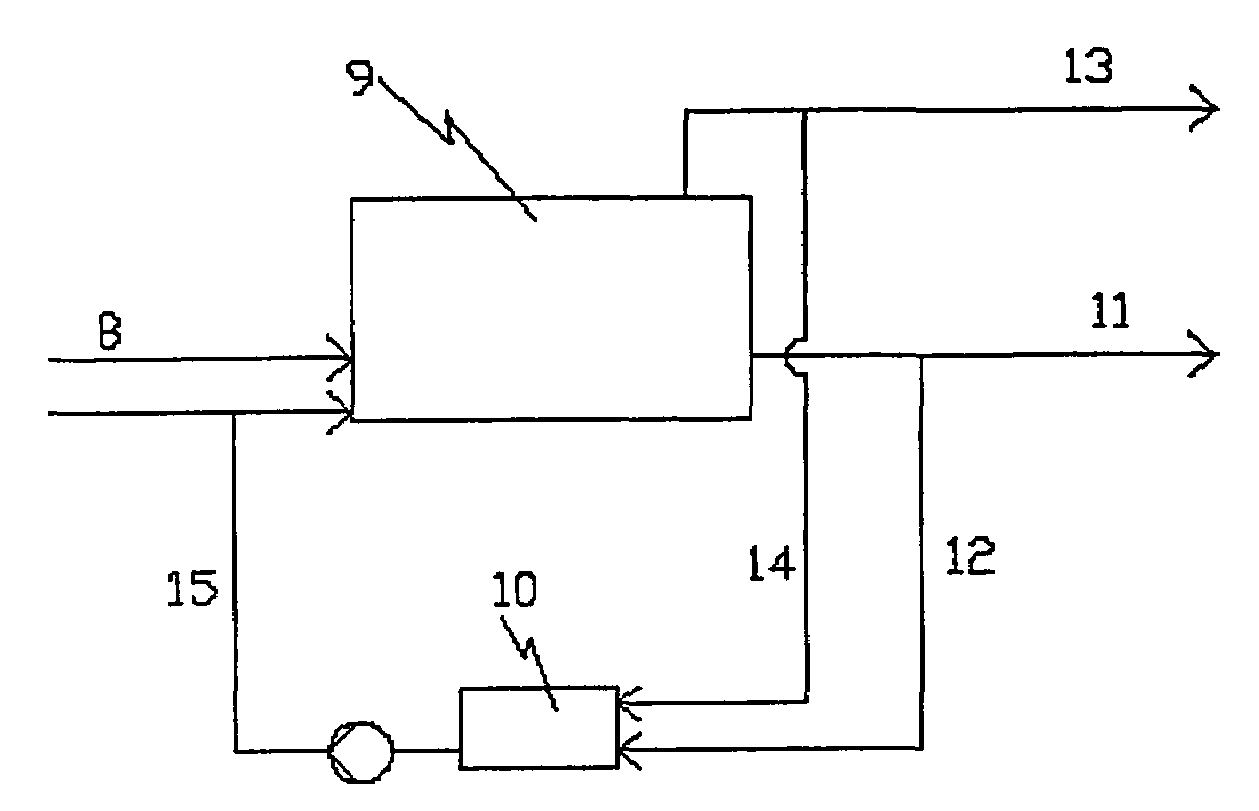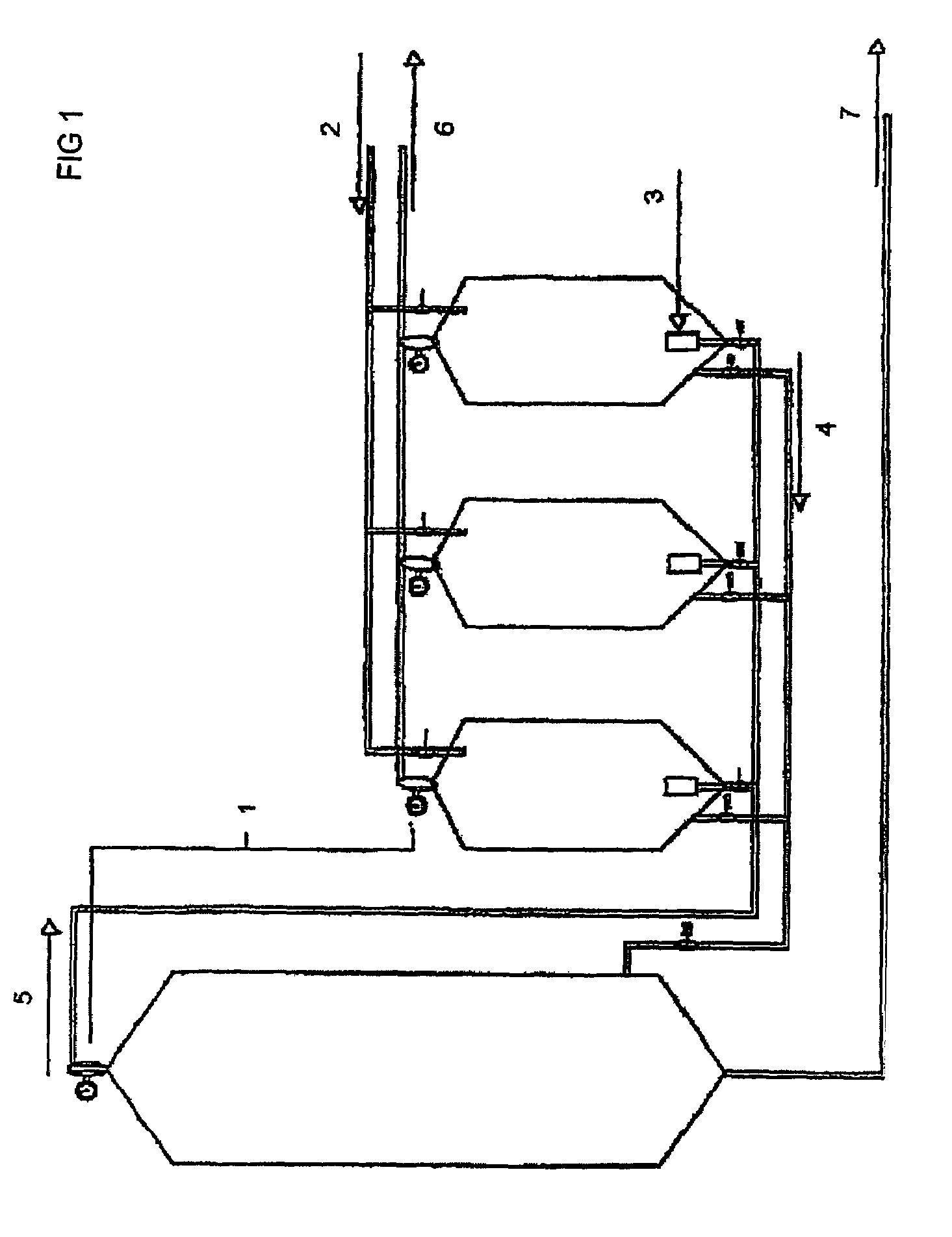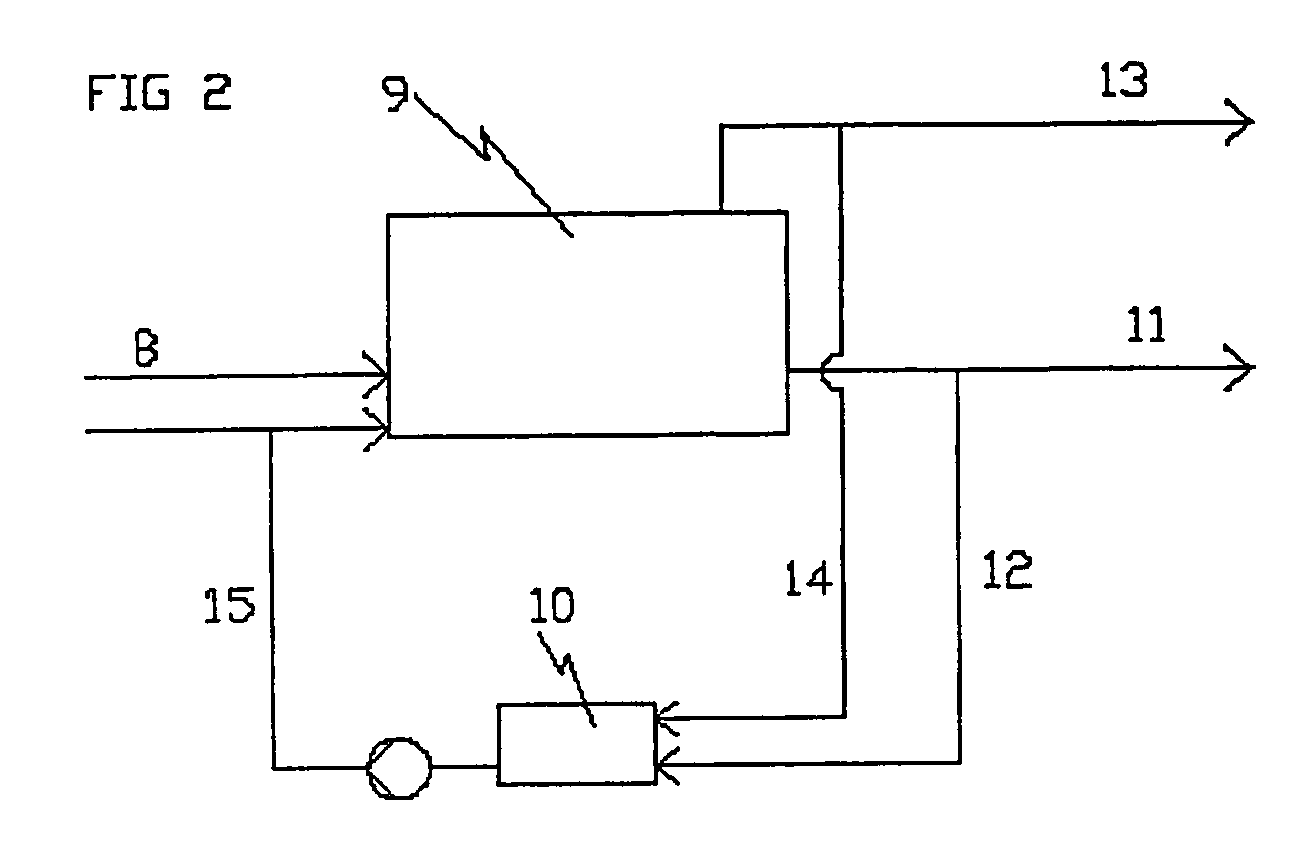Method and equipment for processing organic material
a technology of organic material and equipment, applied in the field of organic material processing, can solve problems such as inability to meet the needs of organic material preservation, facilitate storage, and prolong the life of organic material
- Summary
- Abstract
- Description
- Claims
- Application Information
AI Technical Summary
Benefits of technology
Problems solved by technology
Method used
Image
Examples
example 1
[0057]Processing of Organic Material and Generation of Biogas
[0058]To a reactor R1 having a capacity of 300 liters was introduced organic material that contained 18.8 kg bone flour, 28.9 kg fish and 3.8 kg genetically manipulated yeast (Genencor) and 20 liters inoculum, which contained own microbes of different fishes and yeast. The pressure in the reactor was 2 bar. The pH in the reactor was 8.2. The total NH4 content was determined with a spectrophotometer and it was 9200 mg / l. In addition, the amount of carbonates was determined by means of sulphuric acid and the ammonium ion content as ammonium carbonate was calculated therefrom. The ammonium ion content was calculated to be 8700 mg / l and the content of carbonates was 46300 mg / l. The alkalinity and phosphate content were also determined. The alkalinity was 32000 and the phosphate content was 1200 mg / l. The amount and composition of the biogas obtained from the reactor were measured. On the following day, the reactor yielded 109....
example 2
[0060]Processing of Organic Material and Generation of Biogas
[0061]To a reactor R4 having a capacity of 250 liters was introduced organic material that contained 6.2 kg bone flour, 24.15 kg fish and 3.92 kg genetically manipulated yeast (Genencor) and 20 liters inoculum, which contained own microbes of different fishes and yeast. The pressure in the reactor was 2 bar. The pH in the reactor was 8.0. The total NH4 content was determined with a spectrophotometer and it was 5800 mg / l. In addition, the amount of carbonates was determined by means of sulphuric acid and the ammonium ion content as ammonium carbonate was calculated therefrom. The ammonium ion content was calculated to be 7400 mg / l and the content of carbonates was 39400 mg / l. The alkalinity and phosphate content were also determined. The alkalinity was 21000 and the phosphate content was 1100 mg / l. The amount and composition of the biogas obtained from the reactor were measured. On the following day, the reactor yielded 140...
example 3
[0062]Verification of the Buffer Property of the Organic Material in the Reactor with Sulphuric Acid Additions
[0063]From the reactor R(4) there was taken a 50 ml sample of organic material during the process. In order to verify a buffer property the pH of the sample was measured and thereafter 1-% H2SO4 was added thereto. Prior to the acid addition, the pH of the sample was 7.6.
[0064]
TABLE 1Addition 1-% H2SO4, mlPH0.57.617.527.437.347.357.167.177.086.996.9106.9
[0065]The pH of the distilled water was 7.6. To 50 ml of distilled water was added 0.5 ml 1-% H2SO4, whereby the pH dropped to 2.3. The buffer effect is thus clearly apparent.
PUM
| Property | Measurement | Unit |
|---|---|---|
| pressure | aaaaa | aaaaa |
| pressure | aaaaa | aaaaa |
| pressure | aaaaa | aaaaa |
Abstract
Description
Claims
Application Information
 Login to View More
Login to View More - R&D
- Intellectual Property
- Life Sciences
- Materials
- Tech Scout
- Unparalleled Data Quality
- Higher Quality Content
- 60% Fewer Hallucinations
Browse by: Latest US Patents, China's latest patents, Technical Efficacy Thesaurus, Application Domain, Technology Topic, Popular Technical Reports.
© 2025 PatSnap. All rights reserved.Legal|Privacy policy|Modern Slavery Act Transparency Statement|Sitemap|About US| Contact US: help@patsnap.com



